New version of automated immigration clearance system being trialled at Woodlands Checkpoint
 July 03, 2022
July 03, 2022
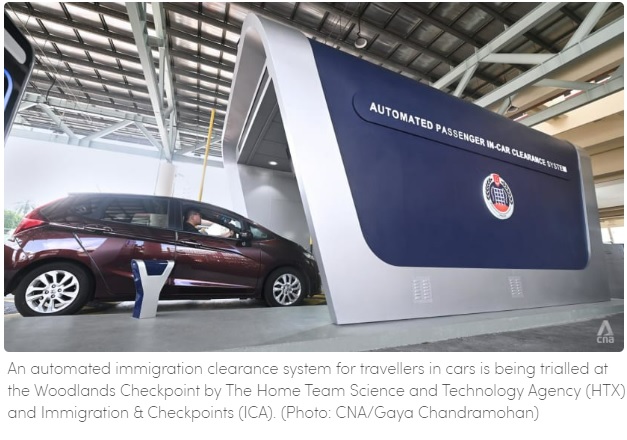
SINGAPORE: Drivers to Singapore via Woodlands Checkpoint may see a futuristic structure looming ahead, allowing them to go through contactless immigration clearance.
Just enter the canopy, scan your passport and you’ll be prompted for your facial and iris biometrics.
Called the Automated Passenger In-Car Clearance System (APICS), it is currently being trialled at the checkpoint. It began on Jun 21 and will end in October, with authorities to announce more operational details at a later date.
The system was developed by the Home Team Science and Technology Agency (HTX).
A first prototype of the system was trialled in 2017 and findings showed that self-clearance of travellers in vehicles is “feasible”, said HTX in a media factsheet.
As part of the first prototype, laser scanners would detect the position of car windows before robotic arms would extend a cradle supporting wireless biometric devices to travellers. Those in the vehicle would then scan their thumbprints and be photographed on these devices, before returning the device to the cradle.
The system was adjusted for the current trial.
“Essentially, what we took away are all the robotic fixtures that require a lot of movement, a lot of moving parts and made the process (of clearing immigration) more seamless,” said Mr Cheng Wee Kiang during a media showcase of APICS. Mr Cheng is director of HTX’s Robotics, Automation and Unmanned Systems Centre of Expertise.
The system is part of the Home Team’s efforts to extend automated clearance facilities at the vehicular zones of the land checkpoints, said HTX.
“APICS will also aim to enhance clearance security and boost the land checkpoints’ operating capacities, in anticipation of the increased traffic volume,” it added.
HOW IT WORKS
As the vehicle enters the clearance zone, automated cameras first capture the licence plate number of the vehicle.
For the purposes of the trial, an Immigration and Checkpoints Authority (ICA) officer stationed in front of APICS will then confirm the number of travellers in the vehicle.
After this is done, the vehicle enters the APICS canopy.
The lighting inside is controlled. The canopy acts as a shield from the external environment while the induction lighting ensures that the biometric scanners – which are sensitive to external conditions – can still function as normal regardless of whether it is day or night.
The self-help kiosk comprises an LCD touch display, passport scanner, biometric scanner, fingerprint scanner and intercom. It also integrates the Land Transport Authority’s equipment for the regulation of foreign-registered vehicles’ entries and exits, as well as the collection of requisite fees and charges from motorists where applicable.
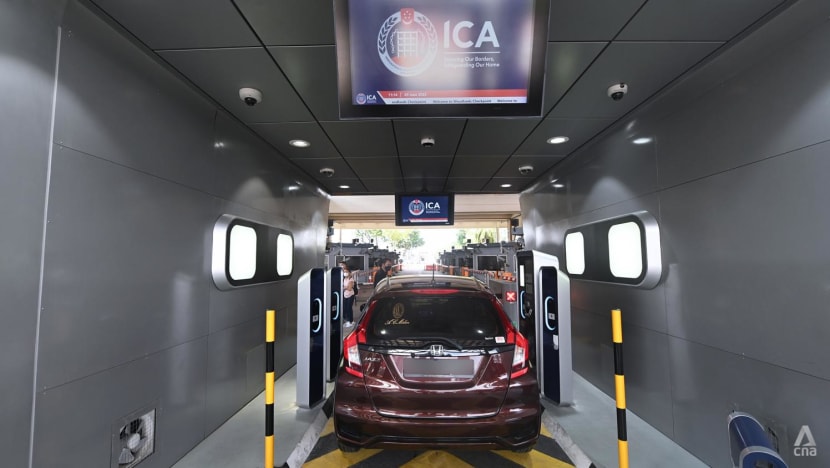
The first prototype of the Automated Passengers In-car Clearance System that trialled in 2017 relied on fingerprint scanners. The new APICS utilises contactless facial and iris biometric scanners. (Photo: CNA/Gaya Chandramohan)
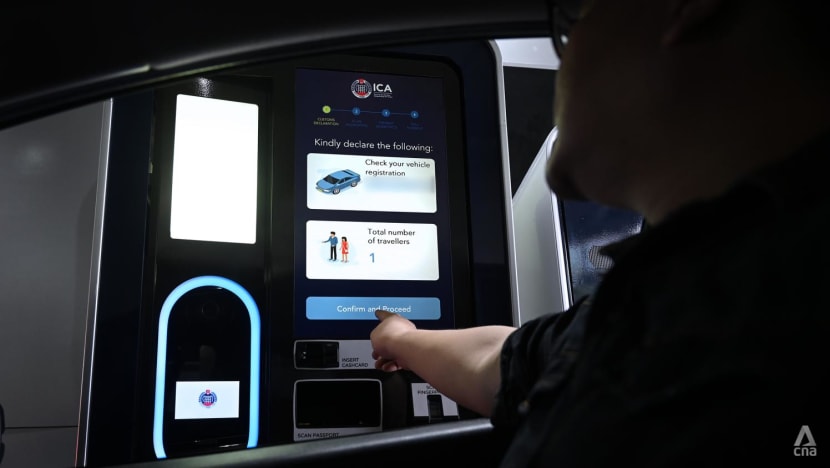
In the first stage of the process, the driver is prompted to confirm the vehicle’s registration number as well as the number of travellers in the vehicle. (Photo: CNA/Gaya Chandramohan)
The idea is for travellers to be able to remain in the vehicle without having to crane their necks out of the window.
To enable this, sensors detect whether the vehicle is a saloon car or SUV. The height of the self-help kiosk will then automatically adjust itself.
Drivers will scan the passports of all those in the vehicle at the self-help kiosk. The system will prompt the driver and the passengers for their facial and iris biometrics to authenticate their identities.
Passengers can do so via contactless biometric scanners that are located outside each car window.
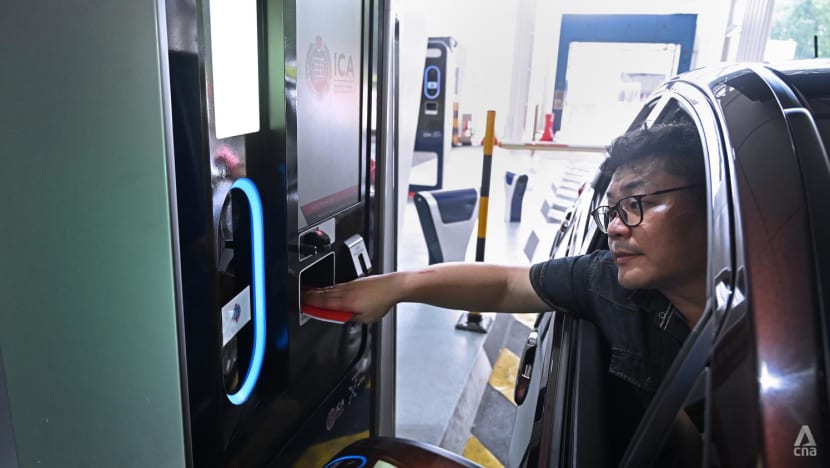
After the vehicle enters the clearance zone, the driver will scan passports in the kiosk. (Photo: CNA/Gaya Chandramohan)
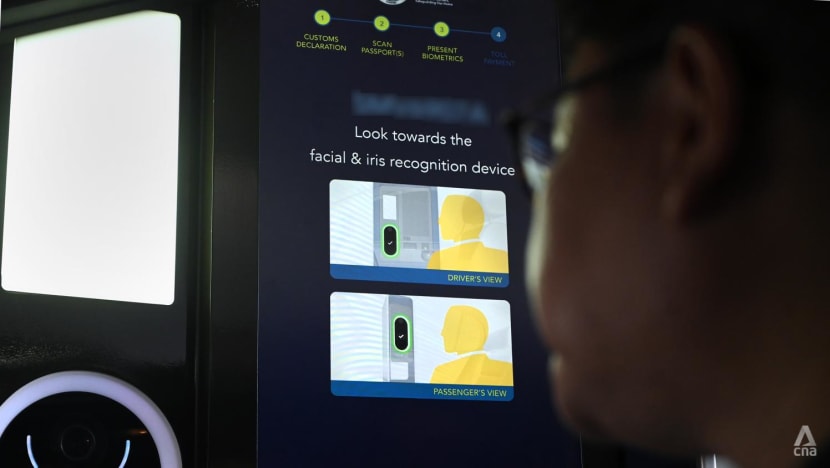
The new iteration of APICS features contactless biometric scanners. (Photo: CNA/Gaya Chandramohan)
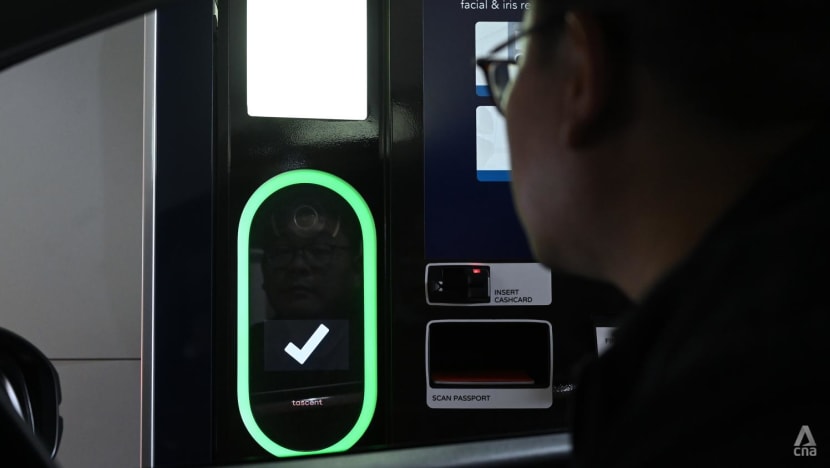
The green light and check mark indicate that facial and iris biometrics have been captured and verified successfully. (Photo: CNA/Gaya Chandramohan)
Other features of APICS include an exhaust fan to remove fumes within the canopy, as well as flexible traffic poles to guide drivers entering the clearance zone.
Throughout the entire process, the only touchpoint for travellers will be the passport scanning process, said Mr Cheng.
APICS is currently operational during weekday evenings and those who pass through the system will be asked for their feedback at the end of the process. This will allow HTX to further improve the system.
For now, the pilot is mostly limited to cars where there is a single driver, but it will be progressively offered to cars with more travellers.
Feedback has been “generally quite positive”, added Mr Cheng.
The time taken by each vehicle to clear the system will also be recorded and analysed by ICA, added Dr Daniel Teo, who is deputy director of HTX’s Robotics, Automation and Unmanned Systems Centre of Expertise.
“With APICS, car travellers at land checkpoints will be able to enjoy a more seamless, safer and secure immigration clearance,” said ICA’s Assistant Commissioner Phua Chiew Hua, who is deputy director for operations.
“APICS will also enable ICA to redeploy our officers to perform more higher-value tasks such as profiling and risk assessment at land borders.”
















































